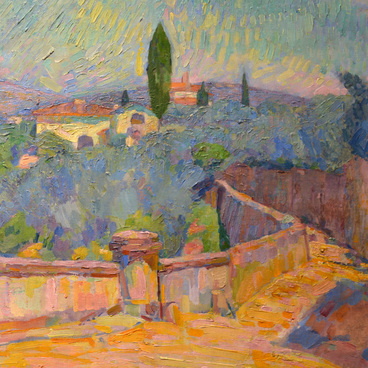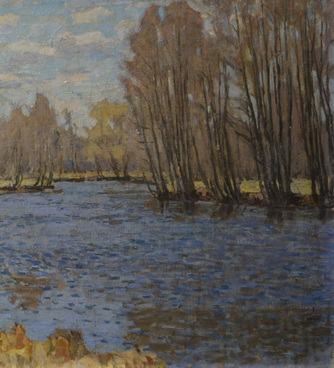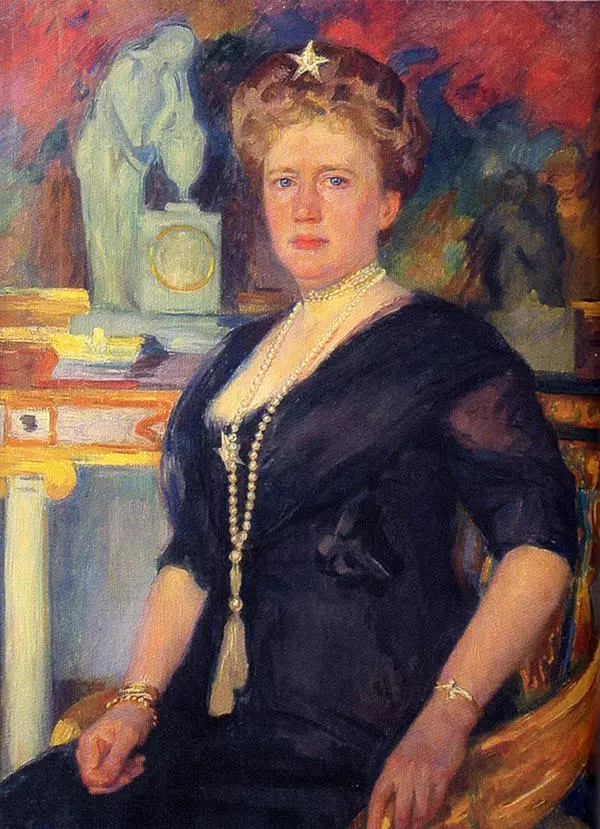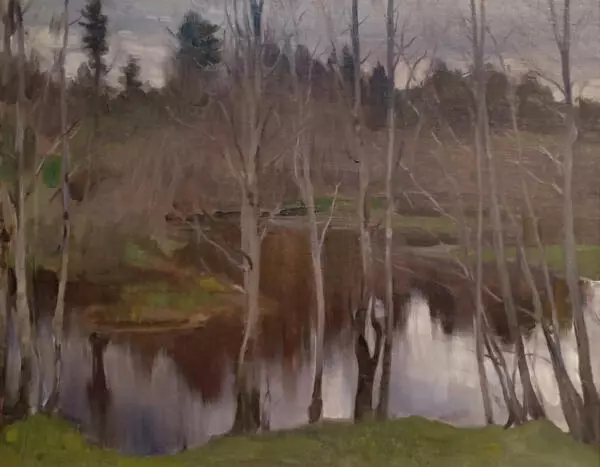When first seeing the presented canvas “Golden Autumn”, it is difficult to form an opinion about its mood and therefore the artist’s mood at the time of painting. The artwork shows Braz’s reflections of a poetic nature; this is not the optimistic “Golden Autumn” of Levitan: the mood is rather pensive and introspective. The balanced composition and color palette, built on the juxtaposition of yellows and greens, create a sense of harmony between lines, color and tone. The color is soft, calm; birches seem to vibrate in space. The descending diagonal seems to make the trees tilt lower and lower from the cliff, but the pine, slightly shifted from the center, holds the composition firmly together. Behind this little corner of the forest, we see a bright field.
There is no doubt that the work was painted en plein air. The artist painted this landscape, very intimate in its mood, while standing on a hill.
Osip Braz was born in Odessa in 1873. He graduated from the Odessa Theater and Art College. In the early 1890s, he studied in a private studio in Munich, then moved to Paris. After returning from Europe, he entered the Academy of Fine Arts and attended Repin’s workshop.
In St. Petersburg, he began to give private lessons in the studio on the Moyka River. In 1900, Braz became close to Benois and joined “Mir Iskusstva” (the World of Art association).
In 1914, he became an academician of the Academy of Fine Arts, and in 1918 he was appointed a curator and head of the Department of Dutch Painting at the Hermitage. From 1920, he led a workshop at Vkhutemas (Higher Art and Technical Studios).
In 1924, Osip Braz was arrested. In the spring of 1925, he was accused of “buying paintings to export them abroad and transmitting secret information about the economic situation of the USSR.” In January 1926, he was released on petition and sent into exile to Novgorod, where he was engaged in the development of funds and restoration of monuments at the provincial museum.
In 1928, he left for Germany. Little is known about Braz’s life there. From Germany, he almost immediately moved to Paris, where he created paintings and studied antiques.
Osip Braz’s works are kept in the Tretyakov
Gallery, the Russian Museum, the Perm Art Gallery, the Odessa Art Museum, the
museums of Kaluga, Petrozavodsk, Novokuznetsk and others.






